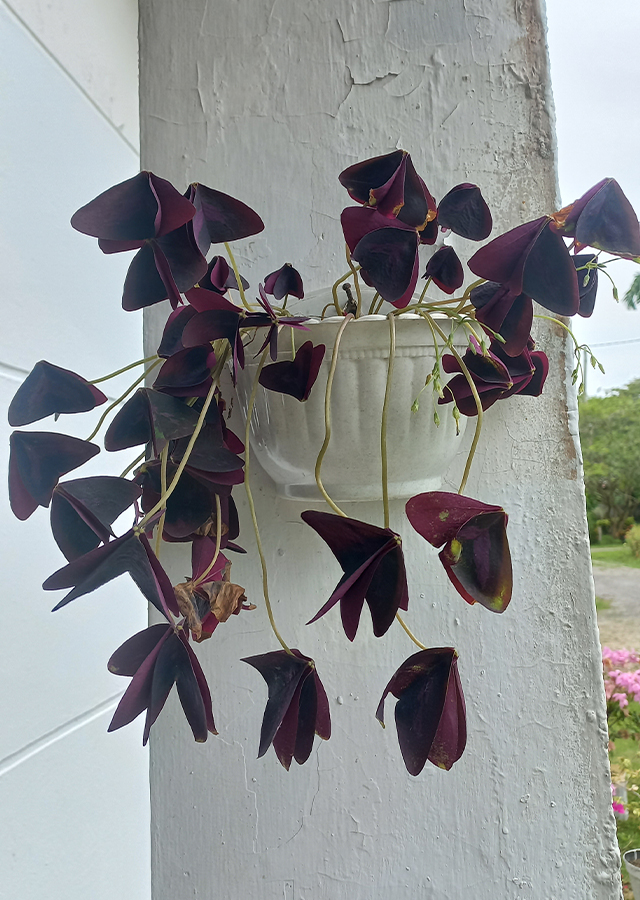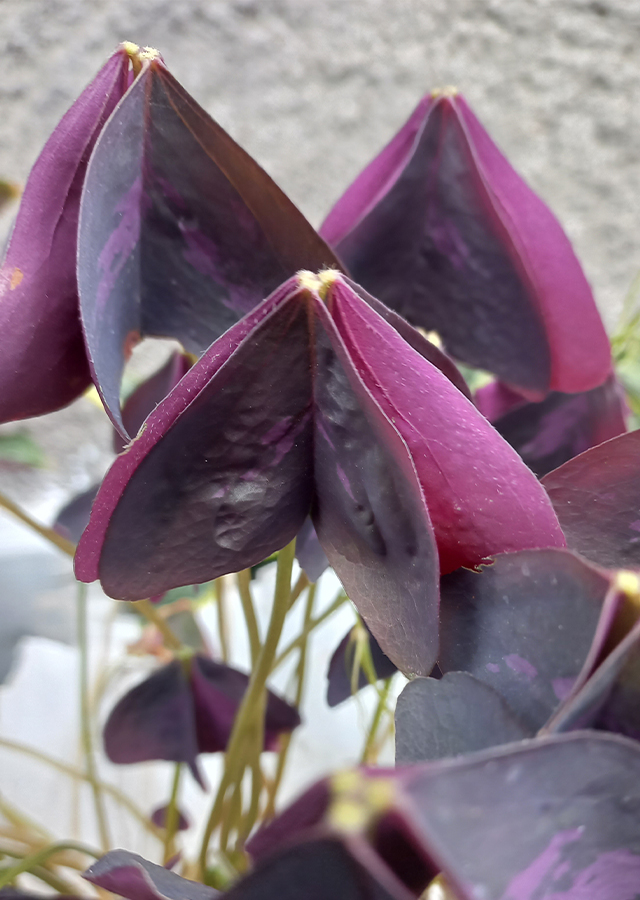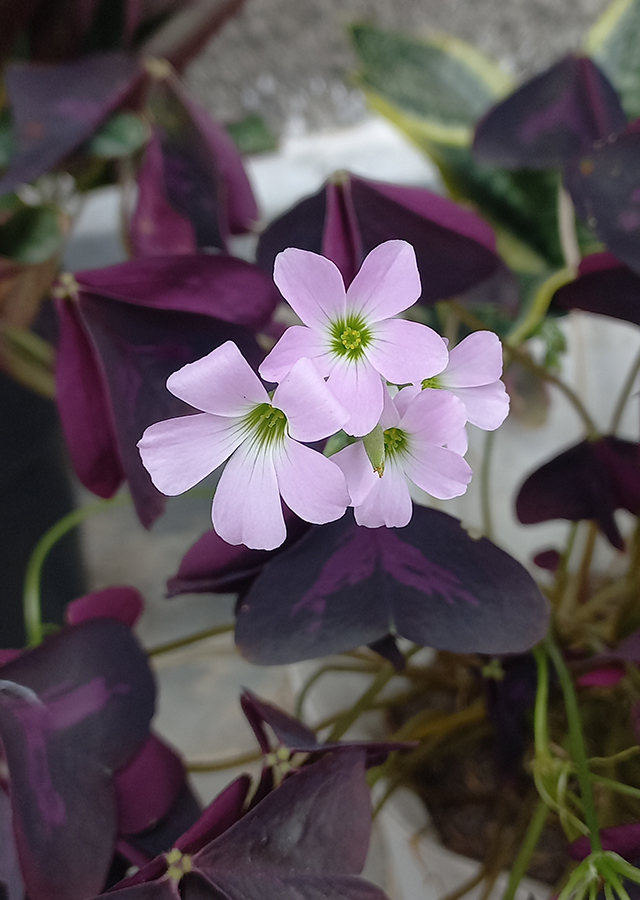Traditional Herbs from Oxalis triangularis
fever
- Take 1 ounce of large clover leaves, wash them until clean.
- Boil until it becomes 1 liter of water and changes color.
- Strain and drink while warm.
wounds
- Take the leaves fresh large clover as needed, wash until clean.
- Crush until it becomes a paste.
- Apply the leaf paste on the wound.
What is Oxalis triangularis Looks like??



Parts of Oxalis triangularis that could be used
- Leaf
Oxalis triangularis Distribution
The big clover originates from Peru and spreads to Brazil and Northern Argentina. This plant is popular as an ornamental house plant which is usually grown in pots and as an indoor plant. This plant is an edible plant. Big clover also has antibacterial activity and is used in traditional medicine.Agroecology of Oxalis triangularis
Big clover can grow outside, in warm areas, but prefers shade. Grows in light (sandy) and medium (loam) but well-drained soil. Suitable for acidic, neutral and alkaline (basic) soils. This plant adapts to dry and damp soil. Can grow in semi-shade (light forest) or without shade. Water regularly during the active growing season, but allow the soil surface to dry out between waterings. In this room, it requires a cool room temperature of around 15 �C.
Morphology of Oxalis triangularis
- The root\u00a0fibrous is up to 5 cm long and 15 mm wide.
- The tuber looks like a small, immature pinecone.
- The rootstock is tuberous.
- The leaves are three-foliate and the petiole is 5-15 cm. The leaves are inverted triangular in shape. The leaves are sessile with a dark purple and glossy appearance, which means they can open and close themselves in response to light.
- Pale pink flowers too, have 5 petals. stems higher above the leaves.
Cultivation of Oxalis triangularis
Propagation uses seeds (generative) and dividing rhizomes (vegetative). Seeds are best sown as soon as they are ripe. Plant the seedlings into individual pots when they are large enough and ready to plant. Propagated by dividing vegetative offsets (rhizomes) from mature clumps or by rhizomes (tubers).
Oxalis triangularis, more details :
Chemical Content of Oxalis triangularisAnthocyanin acetate called malvidin, oxalic acid.
Benefits of Oxalis triangularis
Reduces the discomfort of fever, helps with urinary tract infections, canker sores or boils, ointment for wounds, scratches, rashes and skin infections. Has broad-spectrum antimicrobial, antibacterial properties against bacteria including Staphylococcus aureus, Bacillus cereus, Escherichia coli, and Salmonella typhimurium.
Simplisia of Oxalis triangularis
Another Facts for Oxalis triangularis :
Synonym of Oxalis triangularisOxalis catharinensis N.E.Br., Oxalis delta Vell., Oxalis glaberrima Norlind
Habitus of Oxalis triangularis
Herb. Annual herb, height 0.2 m
Habitat of Oxalis triangularis
- Riverside
No comments:
Post a Comment